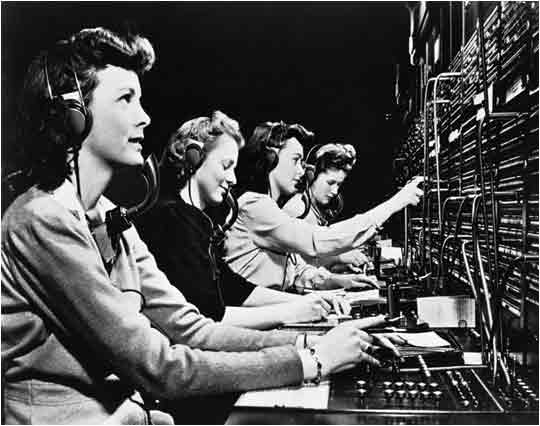Businesses are turning their backs on traditional phone answering services as technology advances. They’re instead opting to connect your phone call through an automated customer service line, or interactive voice response services. If you don’t already know the term, you know the feeling. You call your bank to resolve an issue and you begin navigating a labyrinth of automated menu options. “Press one or say ‘yes’ if you need help with your account.” “I’m sorry, I didn’t catch that. Please repeat your account number.” Sound familiar?
People have become accustomed to the frustrations of an automated answering service since the development of the touch-tone phone. Issues that seemingly could be resolved quickly become drawn out while dealing with these services. You’re filtered through a series of questions before eventually (if ever) being directed to a real, live human. Customers loathe this. In fact, studies show that 83 percent of US consumers prefer dealing with human beings over digital channels. They’ll go through desperate measures to get transferred to a human caller. Swearing into the phone. Creating databases of ways to be connected through to a customer service representative. Hiring a company to deal with customer service for them. And you’re risking losing their business entirely: fifty-two percent of consumers switch service providers in a year due to customer service issues.
Interactive voice response systems aren’t good customer service. They frustrate customers, amplify small roadblocks into bigger ones, and give customers the feeling that they are unimportant.
Doesn’t that seem like an awful customer communication strategy? Maybe that’s not the right way to start off a phone call?
Let’s talk about good customer service.
According to a survey about customer service in a mid-sized company from zendesk, the most important factors in determining what made the interaction go well were:
- The problem was resolved quickly.
- The person who helped me was nice.
- The problem was resolved with one interaction.
- I was originally hoping for this outcome when I contacted customer service.
Robots can’t do it all. And they definitely can’t meet customer service needs the way trained personnel can. Automated customer service isn’t for the customer. It’s for the business owner, but the business doesn’t benefit from these shortcuts.
Good customer service matters.
According to the survey mentioned above, good customer service interactions change behaviors. Customers are more likely to buy your product or service when left with a positive sentiment toward your company. They’re also more likely to buy again. And tell their friends. Wow them, and they’ll even share it on social media. That’s free advertising that can generate more leads.
No one is going to tweet about how, after navigating though many prerecorded menu options, they were able to resolve their problem. No one.
Automated customer service doesn’t mean cheaper.
The installation of an automated system comes at a high price. Most small to mid-sized businesses can’t fit it in their budget. There are regular maintenance charges on top of setup, so you’re still looking at ongoing costs.
You’re not getting a return on you investment, even with that high cost. Zeynep Ton profiles retailers like Trader Joe’s and Costco in The Good Jobs Strategy. She found through her research that companies who invest in their employees are able to drive more business and lower costs as a result. Valued employees make decisions that can’t be automated.
Another option you may want to consider is using a phone answering service with a team of virtual receptionists. A virtual receptionist can improve your bottom line while delighting customers in ways that robots can’t.
Apply this to your small business
You know how frustrating it can be dealing with voice-recording robots when trying to deal with a customer service issue. Would you want to pass that frustration on to your customers? We don’t think so. When you’re considering outsourcing calls to optimize your time, don’t go the route that you consider to be “easiest”. You can lose customers, and the installation of the automated system comes at a high price. That’s no good for your bottom line.
Now, give these a try:
- Consider how it feels to be on the other end of the line when an automated customer service recording comes on. Would that make you want to be a repeat customer?
- Way out the costs and benefits of having an automated answering service vs. a live answering service.
- Contact an answering service to better serve your customers when you’re unavailable.




